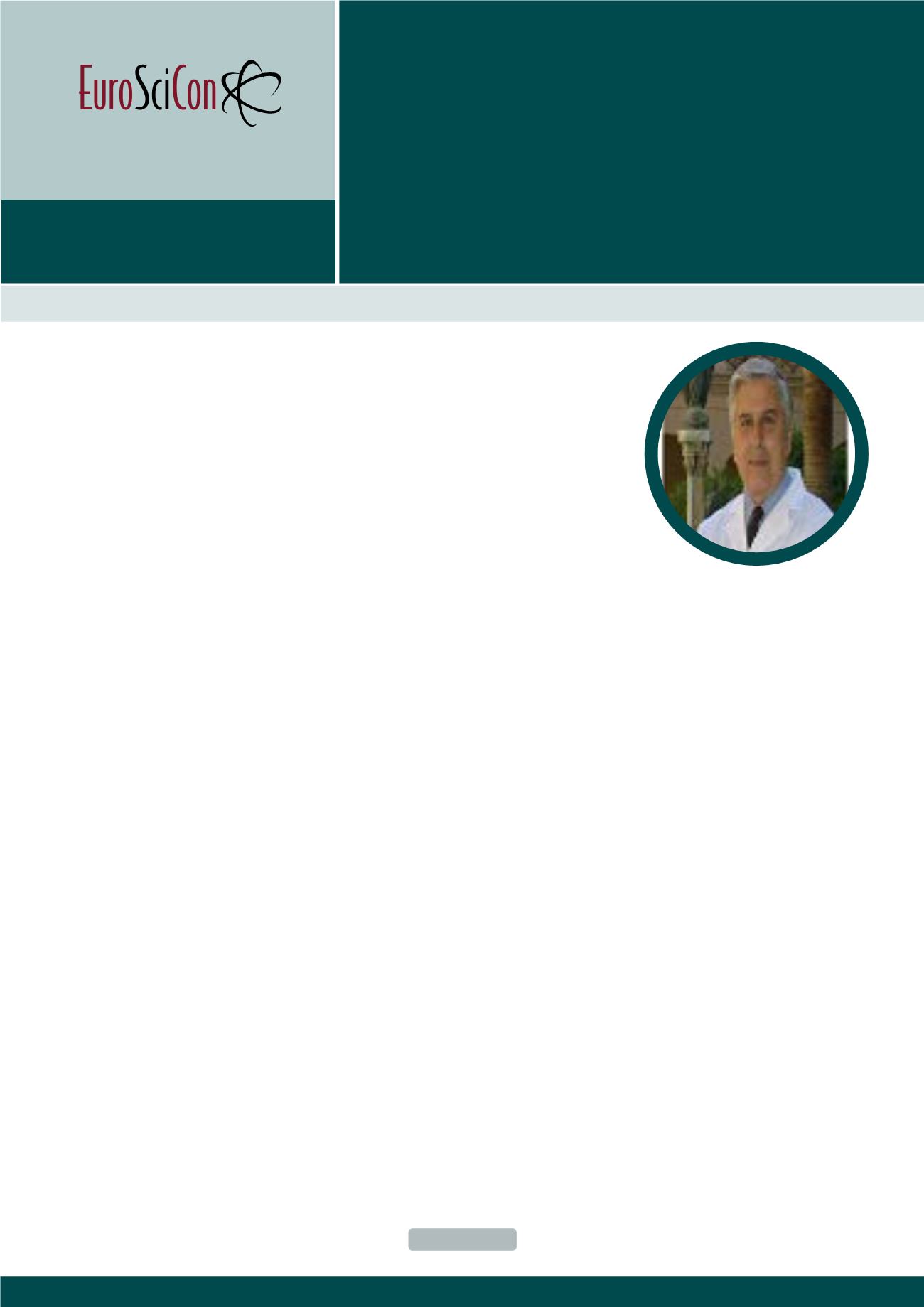

Journal of Stem Cell Biology and Transplantation
ISSN: 2575-7725
December 03-04, 2018
Valencia, Spain
Advanced Stem Cell 2018
Page 25
15
th
Edition of EuroSciCon Conference on
Advanced Stem Cell &
Regenerative Medicine
Segundo Mesa Castillo, J Stem Cell Biol Transplant 2018, Volume 2
DOI: 10.21767/2575-7725-C1-001
Background:
There is increasingevidences that favor theprenatal
beginning of schizophrenia. These evidences point toward intra-
uterine environmental factors that act specifically during the
second pregnancy trimester producing a direct damage of the
brain of the fetus. The current available technology doesn’t allow
observing what is happening at cellular level since the human
brain is not exposed to a direct analysis in that stage of the life in
subjects at high risk of developing schizophrenia.
Method:
In1977webeganadirect electronmicroscopic research
of the brain of fetuses at high risk from schizophrenic mothers in
order to finding differences at cellular level in relation to controls.
Results:
In these studies we have observed within the nuclei of
neurons the presence of complete and incomplete viral particles
that reacted in positive form with antibodies to herpes simplex
hominis type I [HSV1] virus, and mitochondria alterations.
Conclusion:
The importance of these findings can have
practical applications in the prevention of the illness keeping
in mind its direct relation to the aetiology and physiopathology
of schizophrenia. A study of the gametes or the amniotic fluid
cells in women at risk of having a schizophrenic offspring is
considered. Of being observed the same alterations that those
observed previously in the cells of the brain of the studied
foetuses, it would intend to these women in risk of having a
schizophrenia descendant, previous information of the results,
the voluntary medical interruption of the pregnancy or an early
anti HSV1 viral treatment as preventive measure of the later
development of the illness.
Biography
Segundo Mesa Castillo a Specialist in Neurology, he has worked for 10
years in the Institute of Neurology of Havana, Cuba. He has worked in Elec-
tron Microscopic Studies on Schizophrenia for 32 years. He was award-
ed with the International Price of the Stanley Foundation Award Program
and for the Professional Committee to work as a fellowship position in
the Laboratory of the Central Nervous System Studies, National Institute
of Neurological Diseases and Stroke under Dr Joseph Gibbs for a period
of 6 months, National Institute of Health, Bethesda, USA. Currently, he is
Member of the Scientific Board of the Psychiatric Hospital of Havana and
give lectures to residents in psychiatry.
segundo@infomed.sld.cuDirect evidence of viral infection
and mitochondrial alterations in
the brain of fetuses at high risk for
schizophrenia
Segundo Mesa Castillo
Psychiatric Hospital of Havana, Cuba














